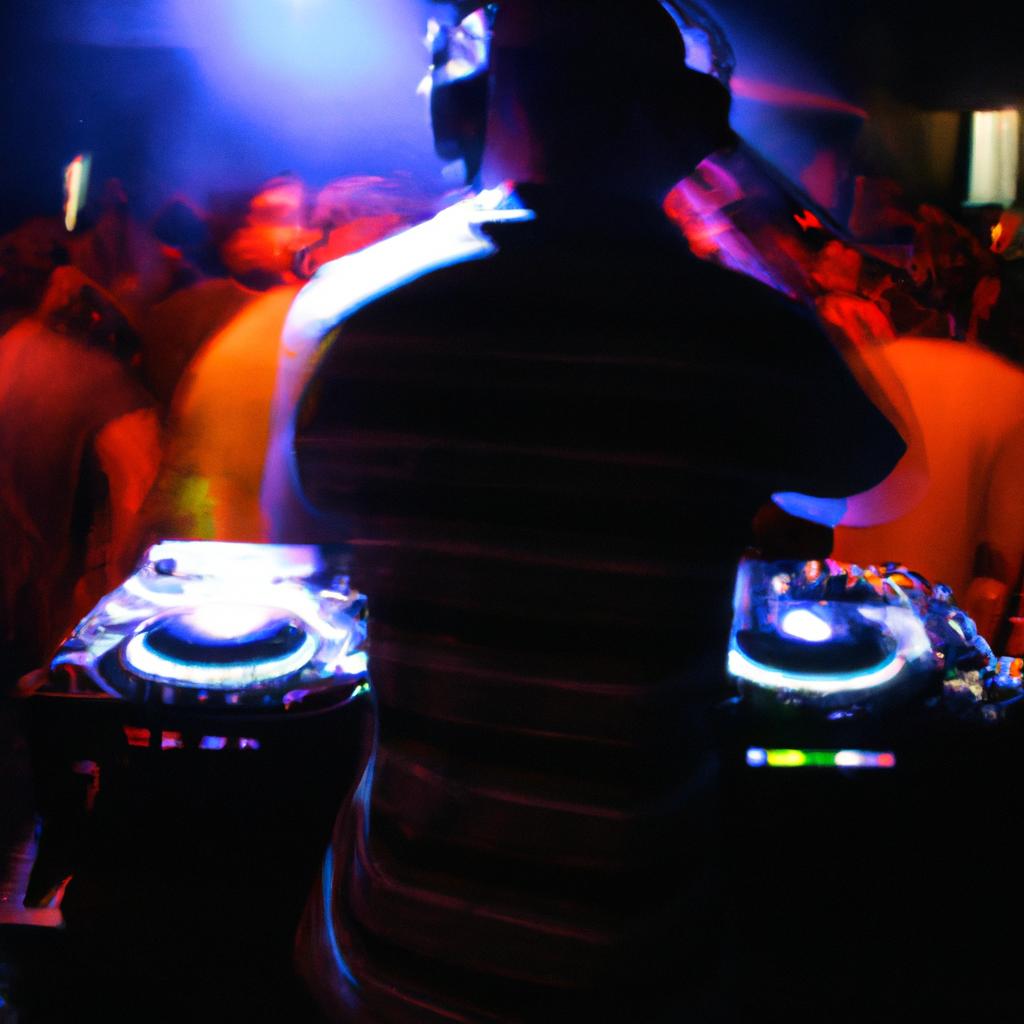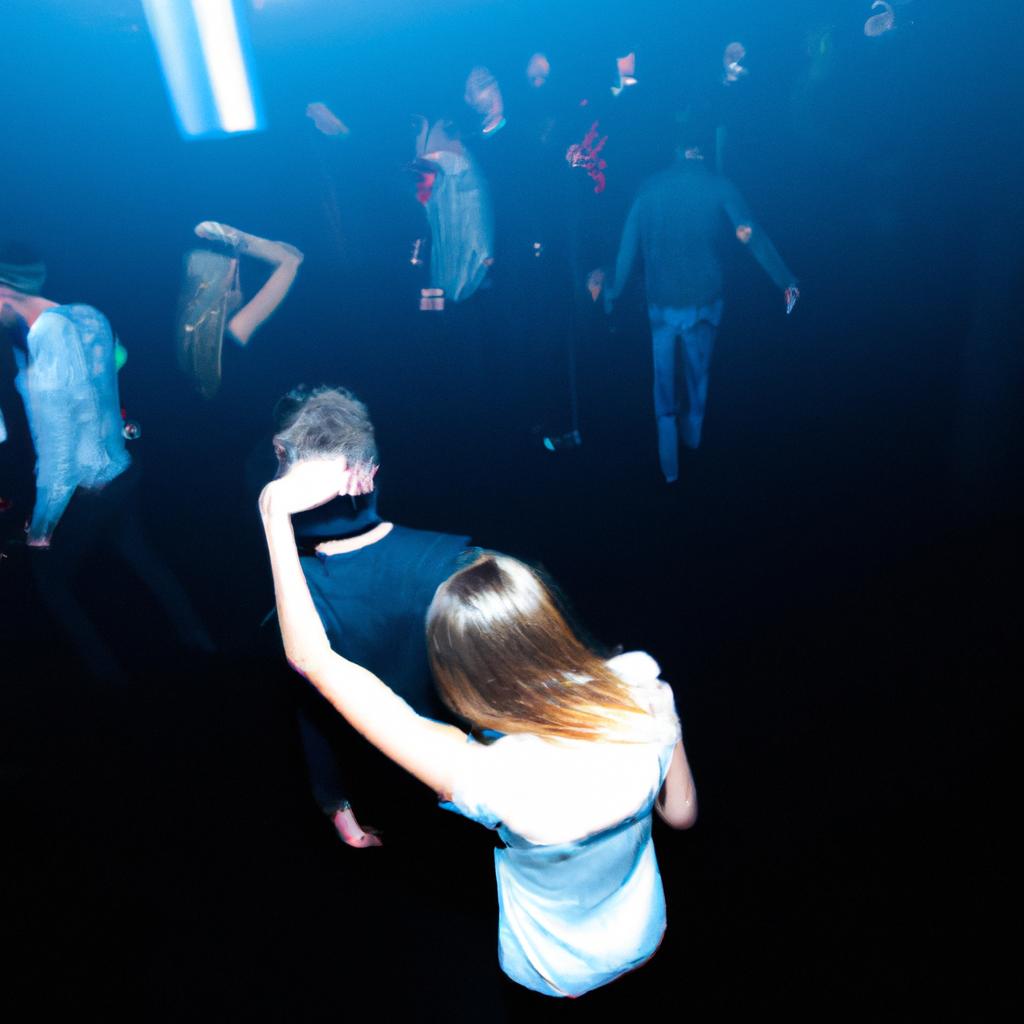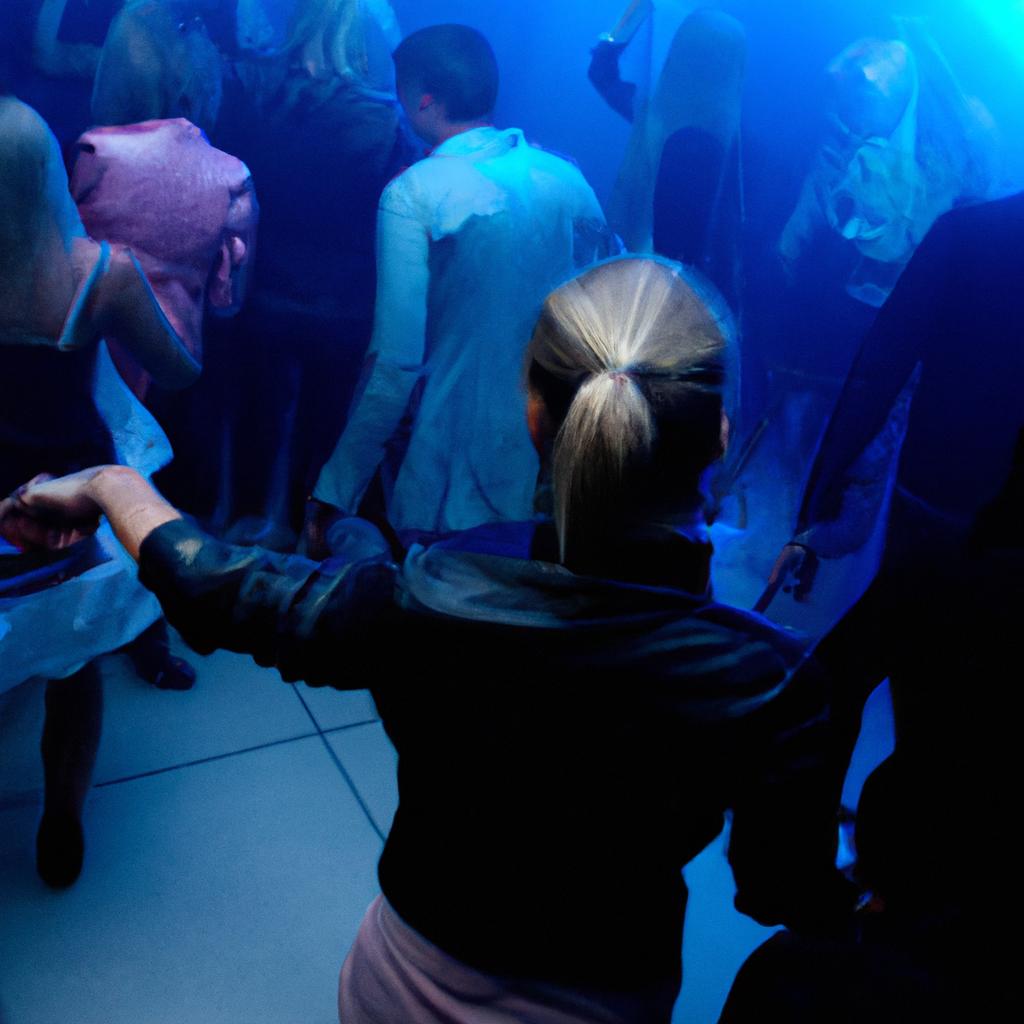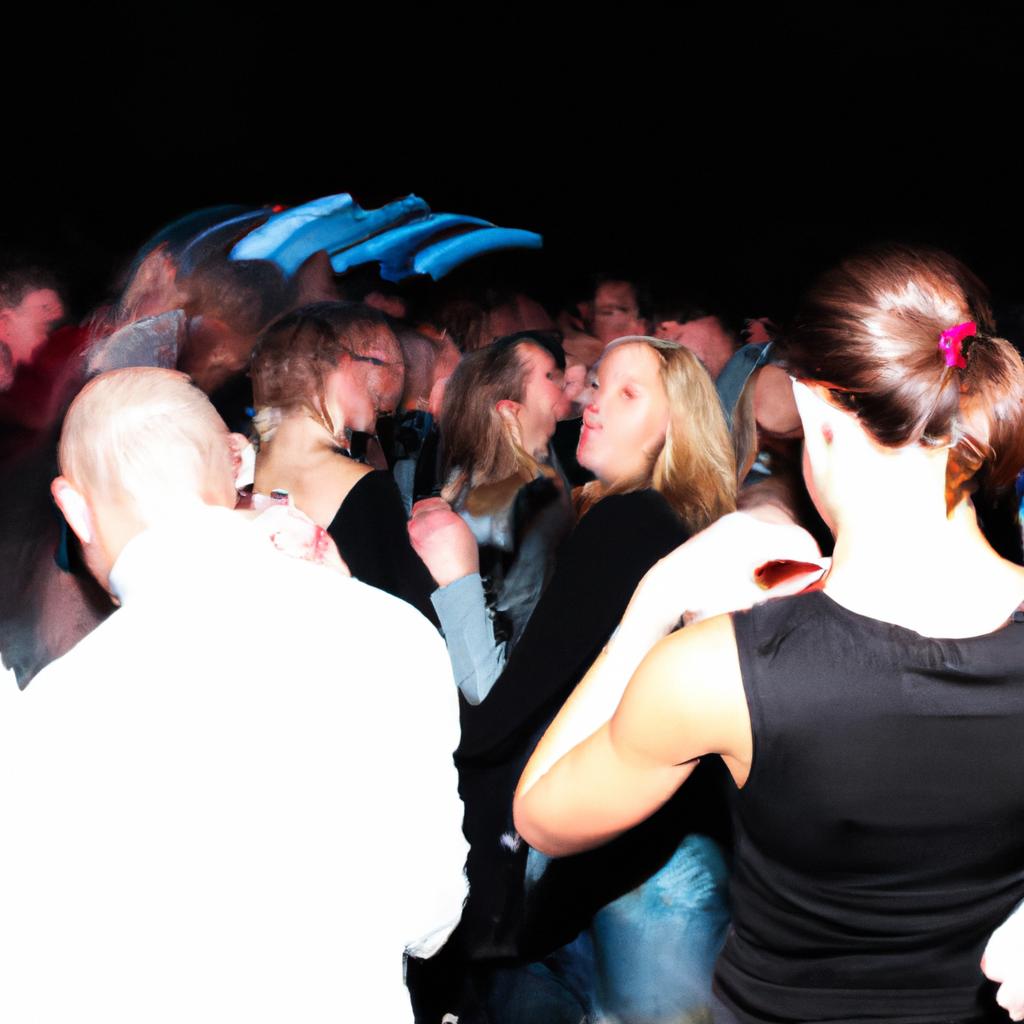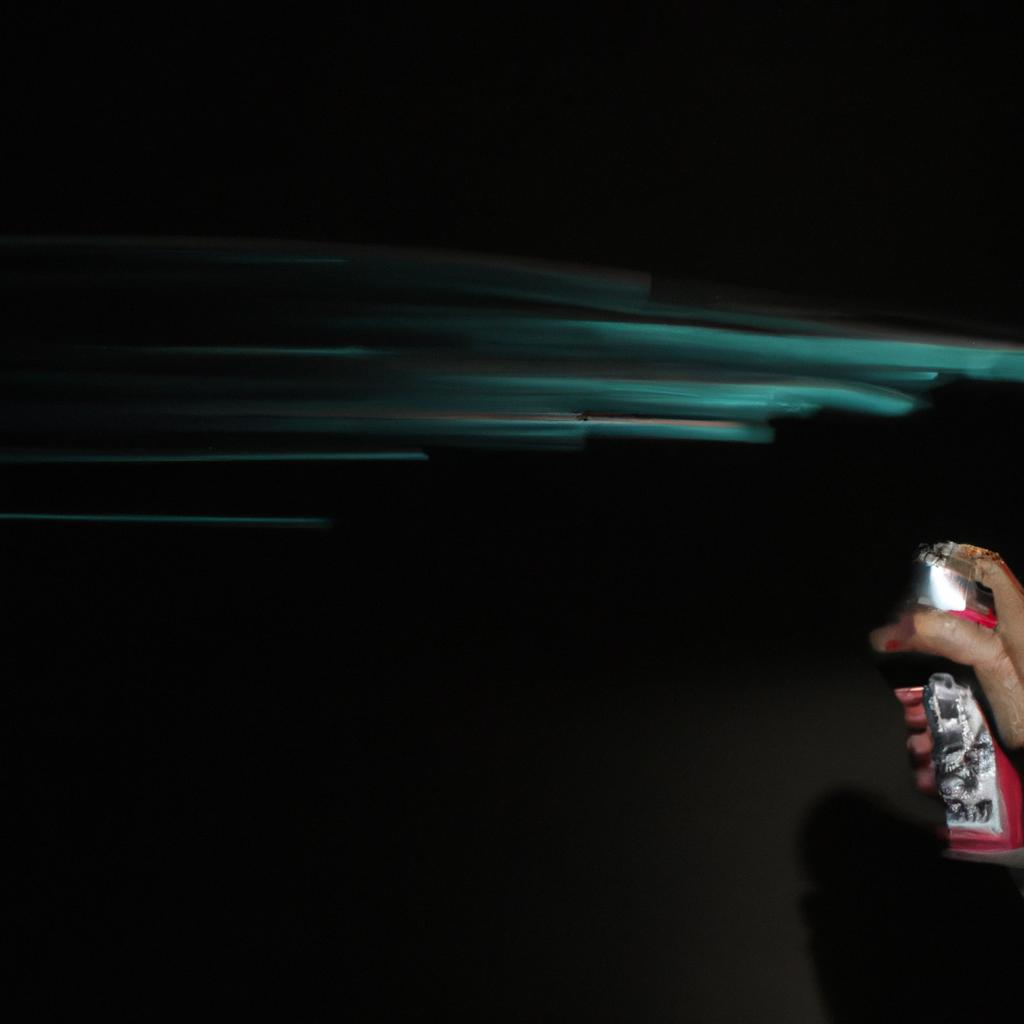Dance Club Etiquette: Essential Rules for Nightclub Dancing
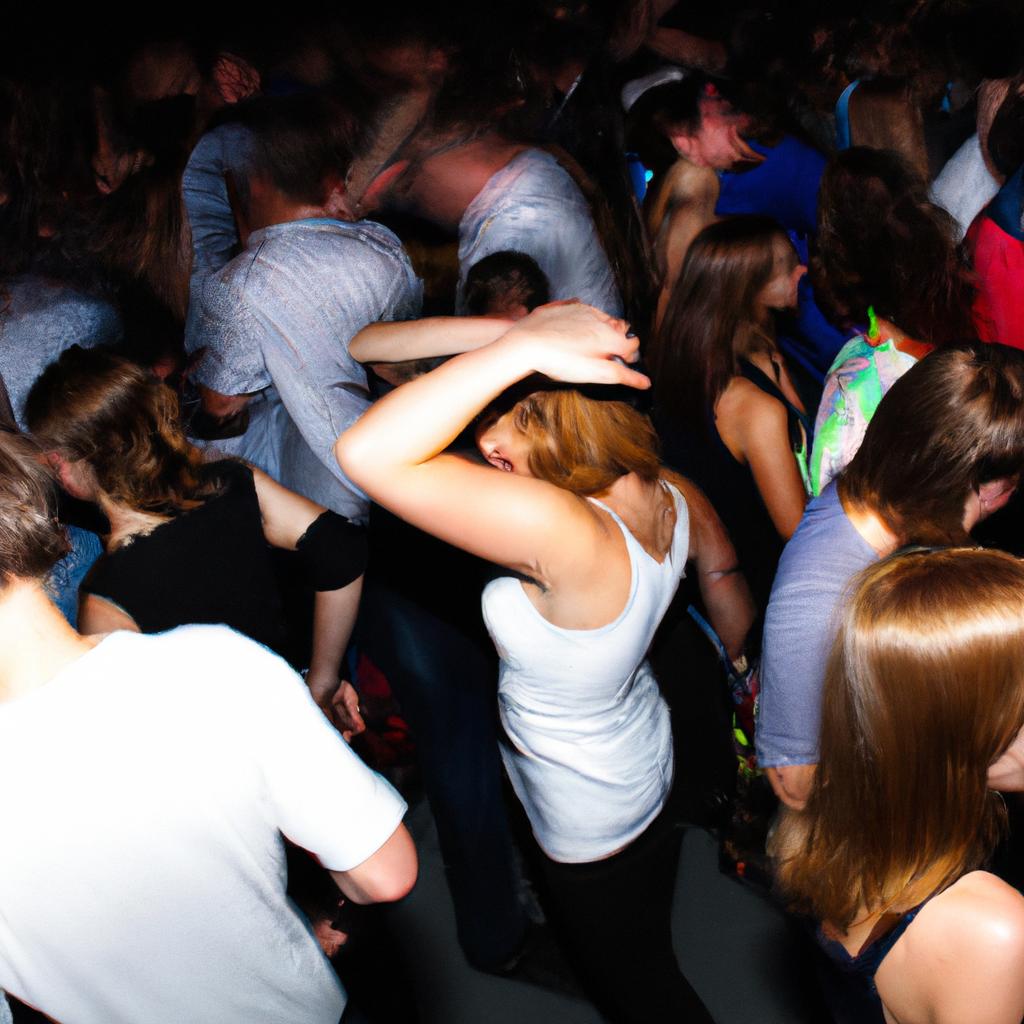
Nightclubs are vibrant spaces where people gather to enjoy music and dance the night away. However, amidst all the excitement and energy, it is essential for individuals to adhere to certain etiquette rules while on the dance floor. This article aims to provide an insightful guide on dance club etiquette, offering a set of essential rules that will enhance one’s nightclub experience.
Imagine a crowded dance floor where bodies move in synchrony with pulsating beats, creating a mesmerizing spectacle of rhythm and motion. In such an environment, understanding and following proper dance club etiquette becomes crucial not only for personal enjoyment but also for ensuring a harmonious atmosphere. Whether you are a seasoned dancer or someone stepping onto the dance floor for the first time, adhering to these guidelines will help create a positive experience for both yourself and those around you. By adopting good manners and respecting others’ space, dancers can contribute to fostering an inclusive and enjoyable ambiance within nightclubs.
Arrive early to avoid long lines and secure a good spot on the dance floor.
Imagine this scenario: it’s Friday night, and you’re excitedly heading to your favorite dance club. As you approach the venue, however, you notice a seemingly endless line snaking around the block. The anticipation quickly turns into impatience as you realize that waiting in line means wasting precious dancing time inside. This is where arriving early can make all the difference. By getting there before the crowd arrives, you not only bypass the long queues but also have a better chance of securing a prime spot on the dance floor.
To emphasize why arriving early is crucial, consider these points:
- Beat the crowds: Dance clubs are typically packed during peak hours, especially on weekends or special events. Arriving early allows you to enjoy some breathing space before things get too crowded.
- Find your comfort zone: Being one of the first few people on the dance floor gives you more freedom to move without bumping into others or feeling claustrophobic.
- Connect with like-minded dancers: Early arrival provides an opportunity to meet fellow enthusiasts who share your passion for dancing and may even inspire new moves.
- Make an impression: If you’re someone who enjoys showcasing their skills or simply wants to be noticed by others, being present when fewer people are around increases your chances of standing out.
Consider this table highlighting key advantages of arriving early:
| Advantages of Arriving Early at a Dance Club |
|---|
| Less waiting time |
| More space on the dance floor |
| Opportunity for socializing |
| Increased visibility |
In conclusion, arriving early at a dance club sets the stage for an enjoyable evening filled with music and movement. You’ll steer clear of lengthy queues, secure yourself ample room on the dance floor, potentially make new connections with fellow dancers, and increase your chances of leaving a lasting impression. Next, let’s explore the importance of respecting personal space and avoiding collisions with other dancers.
Respect personal space and avoid bumping into other dancers.
Once you have secured a good spot on the dance floor, it is important to remember that respecting personal space and avoiding collisions are crucial aspects of dance club etiquette. By being mindful of your surroundings and considering the comfort of others, you can ensure an enjoyable experience for everyone involved.
Paragraph 1:
Imagine this scenario: You’re in a crowded nightclub, surrounded by enthusiastic dancers moving to the rhythm of pulsating beats. Suddenly, someone carelessly bumps into another dancer, causing them both to lose their balance and nearly fall. Such incidents can easily disrupt the flow of the dance floor and potentially lead to injuries. To avoid these situations, always be aware of your movements and make conscious efforts to respect personal boundaries.
Paragraph 2:
To further emphasize the significance of personal space in dance clubs, consider the following guidelines:
- Maintain an arm’s length distance between yourself and other dancers.
- Avoid flailing or exaggerated movements that may encroach upon nearby individuals.
- Be mindful when dancing with a partner; ensure your moves do not invade others’ spaces.
- If you accidentally bump into someone, apologize politely and move away promptly.
| Respecting Personal Space |
|---|
| Keep a comfortable distance from fellow dancers |
| Refrain from invading others’ personal bubbles |
| Be cautious while executing wide-ranging movements |
| Apologize sincerely if you unintentionally collide with someone |
Paragraph 3:
By adhering to these principles of respecting personal space on the dance floor, you contribute to creating an atmosphere where all individuals can freely express themselves without worry or discomfort. Remember that every person present at the club shares a common goal: enjoying music and dancing. So let us keep this collective harmony intact as we explore another essential aspect of dance club etiquette – keeping our drinks off the dance floor to prevent spills and accidents.
In order to maintain cleanliness and safety within any nightclub setting, it is crucial to be mindful of where you place your drinks while dancing.
Keep your drinks off the dance floor to prevent spills and accidents.
Respecting personal space and avoiding collisions with other dancers is crucial to maintaining a pleasant atmosphere on the dance floor. It not only ensures everyone’s safety but also allows individuals to freely express themselves through movement. Consider this scenario: Sarah, an enthusiastic dancer, enters a crowded nightclub where people are grooving to the beat. She starts dancing energetically without paying attention to her surroundings and accidentally bumps into another dancer, causing both of them to lose their balance and stumble. This incident could have been avoided if Sarah had followed some essential rules for nightclub dancing.
To avoid such mishaps, here are some guidelines that can help you navigate the dance floor smoothly:
-
Be aware of your surroundings: Take note of the available space and be mindful of others nearby. Avoid flailing your arms or legs too vigorously, especially in crowded areas.
-
Move with intention: Dance moves should flow naturally from one step to another while remaining within your designated area. Sudden jerks or unpredictable movements might startle those around you.
-
Respect boundaries: Even though you may feel excited about showcasing your dance skills, it’s important to give others enough room to move comfortably as well. Stay conscious of the personal space bubble around each individual.
Now let’s take a moment to consider how adhering to these etiquette rules benefits everyone involved:
- Creates harmony: By respecting personal space, dancers contribute to an environment where everyone can enjoy themselves without feeling invaded or threatened.
- Prevents accidents: Being cautious helps minimize collisions and injuries on the dance floor.
- Encourages inclusivity: When dancers respect each other’s boundaries, it promotes an inclusive atmosphere where people of all skill levels and backgrounds can participate.
- Enhances enjoyment: Following proper etiquette allows dancers to focus on their own experience rather than worrying about unintentionally disrupting someone else’s groove.
By keeping these principles in mind during nightclub dancing, individuals can collectively shape a positive and enjoyable environment for everyone involved. Now, let’s move on to the next section: “Follow the dress code to ensure entry and fit in with the club’s atmosphere.”
Follow the dress code to ensure entry and fit in with the club’s atmosphere.
Transitioning smoothly from the previous section, where we discussed the importance of keeping drinks off the dance floor to prevent spills and accidents, let’s now delve into another crucial aspect of nightclub etiquette: following the dress code. To illustrate this point, consider a scenario in which you arrive at a trendy downtown club known for its strict dress policy. You’re excited about joining your friends on the dance floor, but unfortunately, you didn’t adhere to the venue’s guidelines. As a result, you are denied entry and left disappointed.
Following the dress code is essential not only to gain entry into nightclubs but also to fit in with the club’s atmosphere. Each establishment may have its own specific requirements regarding attire, so it is important to research and familiarize yourself with these expectations before arriving. By dressing appropriately according to the club’s style and ambiance, you show respect towards both the venue and other patrons who have made an effort to conform.
To ensure that your outfit aligns with the nightclub’s dress code, keep these considerations in mind:
- Dress stylishly: Opt for fashionable clothing that suits your personal taste while adhering to any specified guidelines.
- Avoid overly casual or sloppy attire: Leave sportswear items such as athletic shoes, sweatpants, or baggy t-shirts at home.
- Pay attention to footwear: Many clubs prohibit sneakers or sandals; instead, choose elegant shoes that complement your ensemble.
- Respect cultural or themed nights: Some venues host special events with specific dress themes (e.g., retro night). Embrace these opportunities by incorporating relevant elements into your attire.
By following these suggestions and respecting each club’s individual policies on dress codes, you can increase your chances of gaining entry while ensuring a harmonious experience among fellow partygoers.
Now let us move forward and explore another key element of dance club etiquette: being mindful of the music and dance style around you. It is vital that you adapt your moves accordingly to enhance both your own experience and the overall atmosphere of the club.
Be mindful of the music and dance style, adapting your moves accordingly.
Having followed the dress code, it is now important to be mindful of the music and dance style in order to navigate the nightclub dancing experience successfully. Adapting your moves accordingly can ensure that you not only fit in with the crowd but also enhance your enjoyment on the dance floor.
Dance styles vary greatly from club to club, and even within different areas of a single venue. For example, let’s consider a hypothetical scenario where you find yourself at a trendy urban nightclub known for its hip-hop and R&B music. In this setting, it would be inappropriate to break out into ballroom-style waltzing or salsa dancing. By observing others around you and listening to the DJ’s song selections, you can gauge the appropriate dance style for each moment.
To help you navigate these nuances further, here are some key points to keep in mind:
- Energy level: Different songs have varying energy levels, from slow and sensual tunes to fast-paced beats that inspire high-energy movements. Adjusting your dance intensity according to the music will ensure that you blend seamlessly with the atmosphere.
- Personal space: Be aware of how much space you occupy on the dance floor. It is essential to respect other dancers’ personal boundaries by avoiding excessive swinging arms or wild leg kicks that may unintentionally invade their space.
- Flow with the crowd: Nightclubs often have crowded dance floors, especially during peak hours. Instead of stubbornly maintaining your own rhythm without regard for others around you, try syncing up with nearby dancers and following their lead. This creates a harmonious flow on the dance floor while allowing everyone to express themselves freely.
- Nonverbal communication: Dancing is a form of nonverbal communication, so pay attention to cues such as eye contact or body language from potential partners who might want to join forces for a specific routine or simply share an enjoyable moment together.
| Key Points |
|---|
| Adjust your energy level to match the music. |
| Respect personal space of fellow dancers. |
| Flow with the crowd rather than dance independently. |
| Be aware of nonverbal communication and potential partnerships. |
In conclusion, adapting your moves to suit the music and dance style is crucial for a successful nightclub dancing experience. By observing others, adjusting your energy level, respecting personal space, flowing with the crowd, and being attentive to nonverbal cues, you can ensure that you’re not only enjoying yourself but also fostering a positive environment on the dance floor.
With an understanding of how to adapt your moves effectively, it’s equally important to remember respectful behavior when interacting with other dancers. Politely ask for consent before dancing with someone and respect their response.
Politely ask for consent before dancing with someone, and respect their response.
Transitioning from being mindful of the music and dance style, it is equally important to consider the comfort and boundaries of others on the dance floor. In a crowded nightclub, navigating personal space can be challenging, but practicing proper etiquette ensures an enjoyable experience for everyone involved.
Imagine this scenario: Sarah enters a bustling dance club with her friends. Eager to show off her moves, she starts dancing without paying attention to those around her. Unbeknownst to Sarah, she accidentally bumps into another dancer who becomes visibly annoyed by her lack of awareness. This situation could have been avoided if Sarah had considered some essential rules for nightclub dancing.
To foster a respectful environment on the dance floor, here are a few guidelines to keep in mind:
- Respect personal space: While you may be excited about your dancing skills or enjoying the energetic atmosphere, it’s crucial to respect the personal space of fellow dancers. Avoid getting too close unless invited or necessary for certain dance styles.
- Be aware of body language: Pay attention to non-verbal cues from other dancers that indicate their willingness or unwillingness to engage with you on the dance floor. If someone seems uninterested or uncomfortable, gracefully move on without pressuring them.
- Mind your gestures: Ensure your movements do not inadvertently invade someone else’s space or cause harm. Wild flailing arms or exaggerated kicks might disrupt others’ experiences and pose potential risks.
- Practice good hygiene: Dancing in a confined space can lead to increased perspiration and body odor. Taking regular breaks to freshen up and using deodorant can contribute positively to everyone’s enjoyment.
Consider the following table which illustrates examples of appropriate and inappropriate behavior on the dance floor:
| Appropriate Behavior | Inappropriate Behavior |
|---|---|
| Giving enough room for others | Pushing through people |
| Responding respectfully when asked not to crowd someone | Ignoring requests for personal space |
| Adjusting dance moves to avoid hitting others | Flailing arms without regard for those nearby |
| Taking breaks and being mindful of body odor | Neglecting personal hygiene |
By adhering to these guidelines, you can contribute to a positive atmosphere where everyone feels comfortable expressing themselves through dance. Remember that respecting the boundaries and preferences of others is paramount in creating an enjoyable nightclub experience.
Incorporating these suggestions into your dancing routine will not only enhance your own enjoyment but also foster a welcoming environment for all patrons on the dance floor. So next time you hit the club, remember to be mindful of personal space, adapt your movements accordingly, and respect the comfort of those around you. Let’s make every night out a memorable one!

